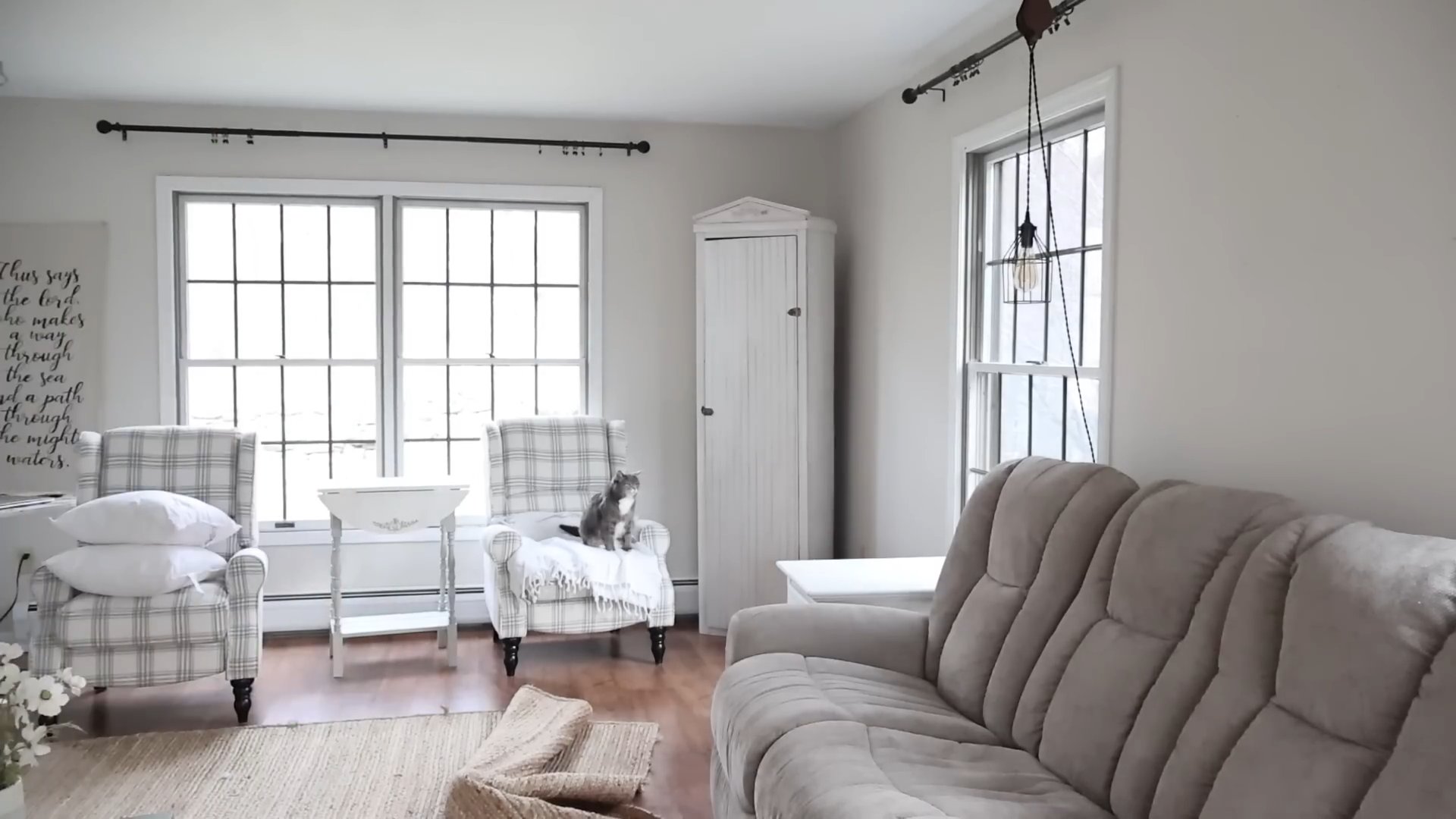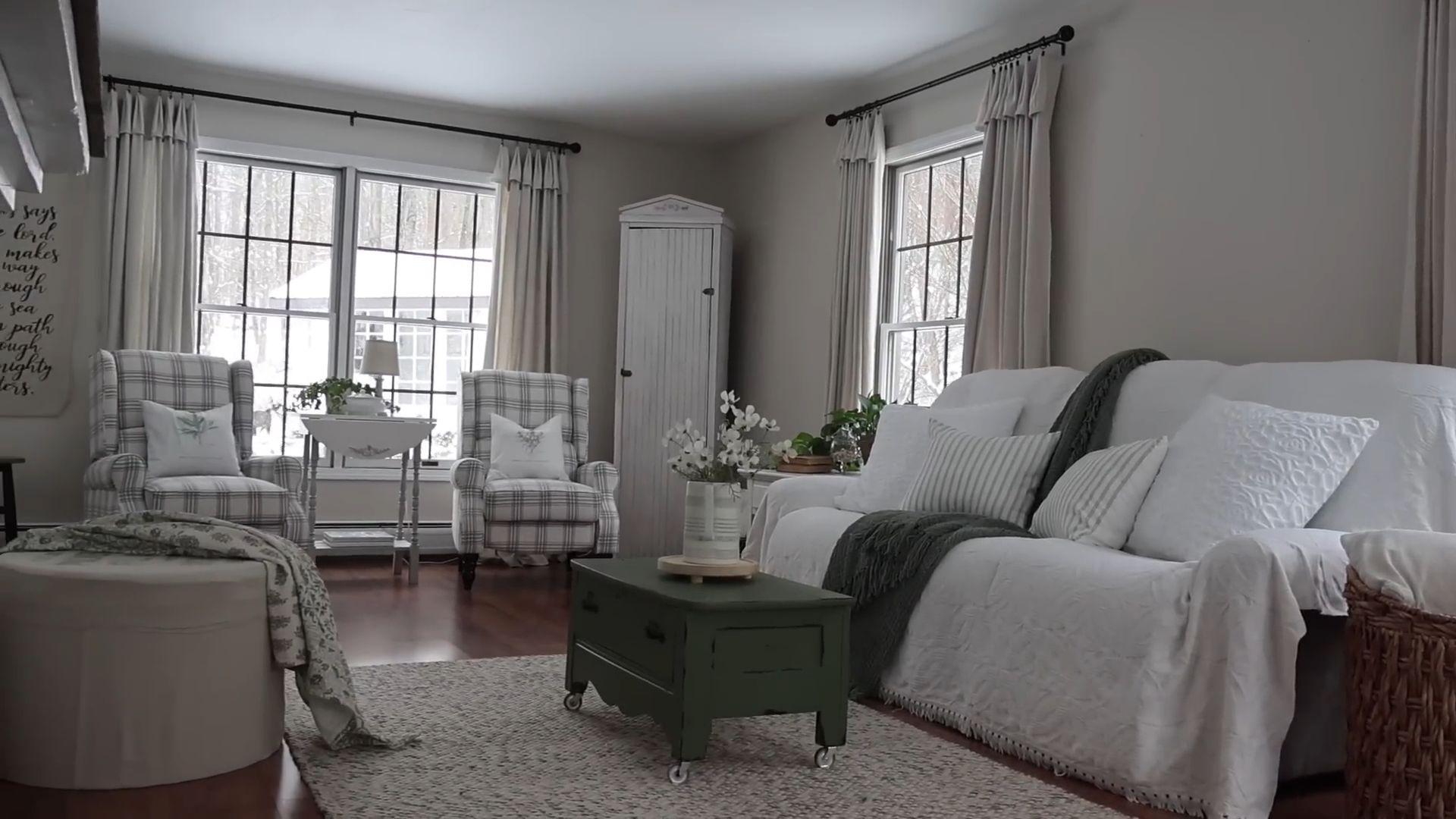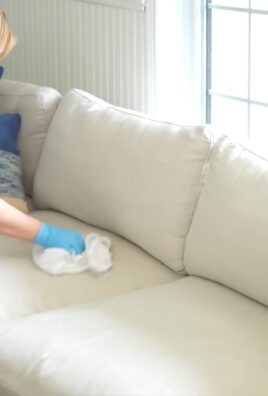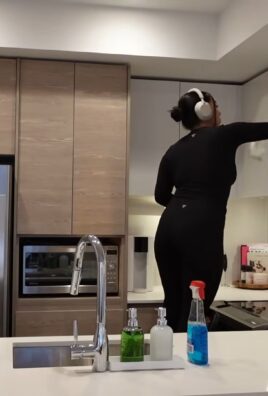Spring cleaning tips – who doesn’t need them after a long winter? I know I do! Stepping into a fresh, decluttered home as the days get longer is one of life’s simple joys. But let’s be honest, the thought of tackling a whole house clean can feel overwhelming. That’s where these DIY spring cleaning tricks come in handy.
The tradition of spring cleaning has deep roots, stretching back to ancient cultures. For example, in Iranian culture, “Khooneh Tekani” (shaking the house) is a Persian New Year tradition, symbolizing a fresh start. Similarly, many cultures associate spring with renewal and purification, making it the perfect time to cleanse our living spaces.
But beyond cultural significance, spring cleaning is essential for our well-being. A clean home reduces allergens, improves air quality, and boosts our mood. Plus, who doesn’t love the feeling of accomplishment after a good decluttering session? In this article, I’m sharing my favorite DIY spring cleaning tips and hacks to make the process easier, faster, and even a little bit fun. From tackling those dusty corners to organizing your closet, these simple tricks will help you transform your home into a sparkling sanctuary. Get ready to embrace the season of renewal with these amazing spring cleaning tips!

DIY Closet Organization: From Chaos to Calm
Okay, friends, let’s be honest. We’ve all got that one closet (or maybe more than one!) that’s a black hole of clothes, shoes, and forgotten treasures. Spring cleaning is the perfect time to tackle that beast and transform it into an organized oasis. I’m going to walk you through my tried-and-true method for decluttering and organizing your closet, step-by-step. Get ready to say goodbye to the chaos and hello to a closet you actually enjoy opening!
Phase 1: The Great Purge – Decluttering Like a Pro
This is the most crucial part, and honestly, the hardest. But trust me, once you get through this, the rest is a breeze. We’re going to be ruthless!
* Empty Everything Out: I mean *everything*. Take it all out of the closet and pile it on your bed, floor, wherever you have space. This is essential to see the full scope of what you’re dealing with.
* Clean the Empty Closet: Now that the closet is empty, give it a good cleaning. Dust the shelves, vacuum the floor, and wipe down the walls. A clean slate is a happy slate!
* The Three-Pile System: Create three piles: “Keep,” “Donate/Sell,” and “Trash.” Be honest with yourself!
* The Golden Rules of Decluttering:
* The “Haven’t Worn It in a Year” Rule: If you haven’t worn something in a year (excluding special occasion items), it’s time to let it go.
* The “Doesn’t Fit” Rule: Holding onto clothes that are too big or too small? Donate them! They’re just taking up valuable space and probably making you feel bad.
* The “Damaged Beyond Repair” Rule: Stains, rips, tears that can’t be fixed? Trash it.
* The “Duplicate Item” Rule: Do you really need five black sweaters? Keep your favorite one or two and donate the rest.
* The “Doesn’t Spark Joy” Rule: Marie Kondo taught us well! If an item doesn’t make you happy when you hold it, it’s time to say goodbye.
Step-by-Step Instructions for Decluttering:
1. Start with Clothing: Pick up each item of clothing, one at a time. Ask yourself the questions above. Be honest!
2. Move on to Shoes: Shoes are often a big culprit of closet clutter. Are they comfortable? Do you wear them regularly? Are they in good condition?
3. Tackle Accessories: Belts, scarves, hats, jewelry – go through them all. Get rid of anything you don’t wear or that’s broken.
4. Handle Miscellaneous Items: Anything else that’s lurking in your closet (old handbags, travel documents, etc.) needs to be sorted.
5. Bag Up the “Donate/Sell” Pile: Get those items out of your house as soon as possible! The longer they sit there, the more likely you are to change your mind.
6. Dispose of the “Trash” Pile: Don’t let those items linger either.
Phase 2: Planning Your Organization Strategy
Now that you’ve decluttered, it’s time to plan how you’re going to organize what’s left. This is where you can get creative and customize your closet to fit your needs.
* Assess Your Space: Take a good look at your closet. What kind of shelving and hanging space do you have? Are there any awkward corners or unused areas?
* Consider Your Needs: What kind of clothes do you have the most of? Do you need more hanging space, shelving, or drawers?
* Choose Your Organization Tools: There are tons of great closet organization products out there. Here are a few of my favorites:
* Hanging Organizers: Great for shoes, sweaters, or accessories.
* Shelf Dividers: Keep stacks of clothes neat and tidy.
* Drawer Organizers: Perfect for socks, underwear, and other small items.
* Matching Hangers: A simple way to make your closet look more organized. I prefer slim velvet hangers because they save space and prevent clothes from slipping.
* Storage Bins: Ideal for storing out-of-season clothes or items you don’t use often.
* Adjustable Shelving Units: If you have the budget, these can be a game-changer for maximizing space.
* Plan Your Layout: Think about how you want to arrange your clothes. Consider these strategies:
* Color-Coding: Organize your clothes by color for a visually appealing and easy-to-navigate closet.
* Category-Based: Group similar items together (e.g., all your shirts, all your pants, all your dresses).
* Outfit-Based: If you tend to wear certain outfits regularly, hang them together to save time in the morning.
* Seasonal Organization: Store out-of-season clothes in storage bins to free up space in your closet.
Phase 3: Implementing Your Organization Plan
Time to put your plan into action! This is where all your hard work pays off.
Step-by-Step Instructions for Organizing:
1. Install Your Organization Tools: Put up any hanging organizers, shelf dividers, or drawer organizers you’ve purchased.
2. Start Hanging Your Clothes: Use your chosen organization method (color-coding, category-based, etc.) to hang your clothes. Make sure all your hangers are facing the same direction for a neater look.
3. Fold Your Clothes: Fold your clothes neatly and place them on shelves or in drawers. The KonMari folding method (folding clothes so they stand upright) is a great way to save space and see everything at a glance.
4. Organize Your Shoes: Place your shoes on shelves, in shoe organizers, or in clear shoe boxes.
5. Arrange Your Accessories: Use drawer organizers, hanging organizers, or jewelry boxes to keep your accessories organized.
6. Store Out-of-Season Clothes: Pack away any out-of-season clothes in storage bins and store them in a less accessible area of your closet or in another location.
7. Step Back and Admire Your Work: Take a moment to appreciate your newly organized closet!
Phase 4: Maintaining Your Organized Closet
The key to keeping your closet organized is to maintain it regularly. A little bit of effort each week can prevent it from becoming a disaster zone again.
* The One-In, One-Out Rule: For every new item you bring into your closet, get rid of one old item. This will prevent your closet from becoming overcrowded again.
* Regular Decluttering: Take a few minutes each week to declutter your closet. Get rid of anything you haven’t worn or that doesn’t fit.
* Put Things Back Where They Belong: Make it a habit to put your clothes and shoes away immediately after wearing them.
* Seasonal Closet Refresh: At the beginning of each season, take some time to refresh your closet. Swap out your out-of-season clothes for your in-season clothes.
Bonus Tips for Closet Organization
* Maximize Vertical Space: Use shelves or hanging organizers to take advantage of the vertical space in your closet.
* Use Clear Storage Bins: Clear storage bins allow you to see what’s inside without having to open them.
* Label Everything: Label your storage bins and shelves so you know where everything belongs.
* Add Lighting: Good lighting can make a big difference in your closet. Consider adding a closet light or using LED strip lights.
* Don’t Be Afraid to Ask for Help: If you’re feeling overwhelmed, don’t be afraid to ask a friend or family member for help.
Specific Hacks for Different Closet Types
* Small Closets:
* Use slim hangers to maximize space.
* Install a second closet rod to double your hanging space.
* Use over-the-door organizers for shoes and accessories.
* Walk-In Closets:
* Create zones for different types of clothing (e.g., a zone for work clothes, a zone for casual clothes).
* Use a dresser or chest of drawers to store folded clothes.
* Add a mirror to make the space feel larger.
* Kids’ Closets:
* Use lower shelves and rods so kids can reach their clothes.
* Label everything with pictures so kids know where things belong.
* Involve kids in the organization process to teach them good habits.
I hope these tips help you transform your closet from a source of

Conclusion
So, there you have it! This simple yet incredibly effective DIY trick for spring cleaning is more than just a cleaning hack; it’s a game-changer for your home and your well-being. We’ve walked you through the steps, highlighted the benefits, and hopefully, inspired you to ditch those harsh chemicals and embrace a more natural and cost-effective approach to keeping your space sparkling.
Why is this a must-try? Because it’s not just about cleaning; it’s about creating a healthier, happier home. It’s about saving money, reducing your environmental impact, and taking control of the ingredients you bring into your living space. Commercial cleaners often contain a cocktail of chemicals that can be harmful to your health and the environment. This DIY solution, on the other hand, uses readily available, natural ingredients that are gentle yet powerful.
But the beauty of this DIY trick lies in its versatility. Feel free to experiment with different essential oils to create your own signature scent. Lavender for a calming effect in the bedroom, citrus for an energizing boost in the kitchen, or eucalyptus for a refreshing clean in the bathroom – the possibilities are endless! You can also adjust the ratios of ingredients to suit your specific needs and preferences. If you have particularly stubborn stains, try adding a bit more vinegar or baking soda. For delicate surfaces, dilute the solution further with water.
Consider adding a few drops of tea tree oil for its antibacterial properties, especially when cleaning areas prone to germs, like bathrooms and kitchens. If you prefer a creamier consistency, you can blend in a small amount of castile soap. And for an extra boost of cleaning power, try infusing your vinegar with citrus peels for a few weeks before using it in your cleaning solution. This will not only add a pleasant scent but also enhance its degreasing abilities.
Don’t be afraid to get creative and customize this DIY trick to fit your unique needs and preferences. The key is to experiment and find what works best for you and your home.
We are confident that once you try this DIY spring cleaning trick, you’ll be amazed by the results. You’ll not only have a cleaner home but also a healthier and more sustainable one.
So, what are you waiting for? Gather your ingredients, roll up your sleeves, and get ready to transform your home with this simple yet powerful DIY cleaning solution. We encourage you to try this DIY trick and share your experiences with us! Let us know what variations you tried, what scents you loved, and what cleaning challenges you conquered. Share your photos and videos on social media using #DIYSustainableCleaning and inspire others to embrace a more natural and eco-friendly approach to cleaning. We can’t wait to hear your success stories!
FAQ
What exactly makes this DIY spring cleaning trick better than store-bought cleaners?
Store-bought cleaners often contain harsh chemicals, artificial fragrances, and dyes that can be harmful to your health and the environment. These chemicals can irritate your skin, eyes, and respiratory system, and some have even been linked to more serious health problems. They also contribute to indoor air pollution and can contaminate waterways when they are washed down the drain. This DIY spring cleaning trick, on the other hand, uses natural, non-toxic ingredients that are safe for you, your family, and the planet. It’s a more sustainable and eco-friendly option that doesn’t compromise on cleaning power. Plus, it’s often much cheaper to make your own cleaning solutions than to buy them from the store.
Can I use this DIY cleaning solution on all surfaces in my home?
While this DIY cleaning solution is generally safe for most surfaces, it’s always a good idea to test it in an inconspicuous area first, especially on delicate or sensitive materials like wood, marble, or granite. The acidity of vinegar can potentially damage certain surfaces, so it’s important to proceed with caution. For these surfaces, you may want to dilute the solution further with water or use a different cleaning method altogether. For example, a mixture of mild dish soap and water is often a safe and effective option for cleaning delicate surfaces.
How long will this DIY cleaning solution last?
This DIY cleaning solution is best used within a few weeks of making it. Because it doesn’t contain any preservatives, it can eventually spoil or lose its effectiveness. To prolong its shelf life, store it in a cool, dark place in an airtight container. You can also add a few drops of grapefruit seed extract, which is a natural preservative, to help prevent bacterial growth. If you notice any changes in the color, smell, or consistency of the solution, it’s best to discard it and make a fresh batch.
What essential oils are best to use in this DIY cleaning solution?
The best essential oils to use in this DIY cleaning solution depend on your personal preferences and the desired effect. Some popular options include:
* **Lavender:** For a calming and relaxing scent, perfect for bedrooms and bathrooms.
* **Lemon:** For a fresh and energizing scent, ideal for kitchens and bathrooms.
* **Tea Tree:** For its antibacterial and antifungal properties, great for cleaning surfaces prone to germs.
* **Eucalyptus:** For a refreshing and invigorating scent, perfect for bathrooms and areas with strong odors.
* **Peppermint:** For a stimulating and refreshing scent, ideal for kitchens and bathrooms.
* **Orange:** For a cheerful and uplifting scent, great for any room in the house.
When choosing essential oils, be sure to select high-quality, pure essential oils from a reputable source. Avoid using synthetic fragrances or fragrance oils, as they don’t offer the same therapeutic benefits and can sometimes contain harmful chemicals.
Can I use this DIY cleaning solution to clean my windows and mirrors?
Yes, this DIY cleaning solution can be used to clean windows and mirrors. However, it’s important to dilute it properly to avoid streaks. Mix equal parts of vinegar and water in a spray bottle, and then add a few drops of your favorite essential oil for a pleasant scent. Spray the solution onto the window or mirror, and then wipe it clean with a microfiber cloth. For best results, use a clean, dry microfiber cloth to buff the surface and remove any remaining streaks.
Is baking soda really necessary for this DIY spring cleaning trick?
While baking soda is not strictly necessary, it adds a powerful cleaning boost to the solution. Baking soda is a mild abrasive that helps to scrub away dirt and grime, and it also has deodorizing properties. If you don’t have baking soda on hand, you can still make a effective cleaning solution using just vinegar, water, and essential oils. However, for tougher cleaning jobs, adding baking soda will definitely enhance the cleaning power of the solution.
What if I don’t like the smell of vinegar?
The smell of vinegar can be off-putting to some people, but the good news is that it dissipates quickly after cleaning. You can also mask the smell of vinegar by adding essential oils to the solution. Citrus essential oils, such as lemon, orange, and grapefruit, are particularly effective at neutralizing the vinegar smell. You can also infuse your vinegar with citrus peels for a few weeks before using it in your cleaning solution. This will not only add a pleasant scent but also enhance its degreasing abilities.





Leave a Comment